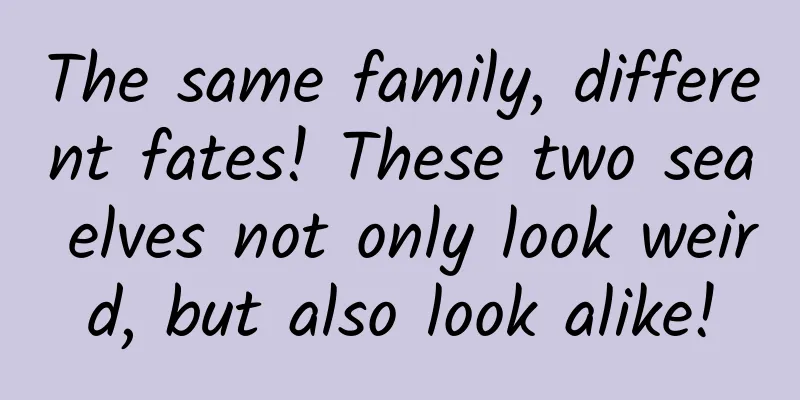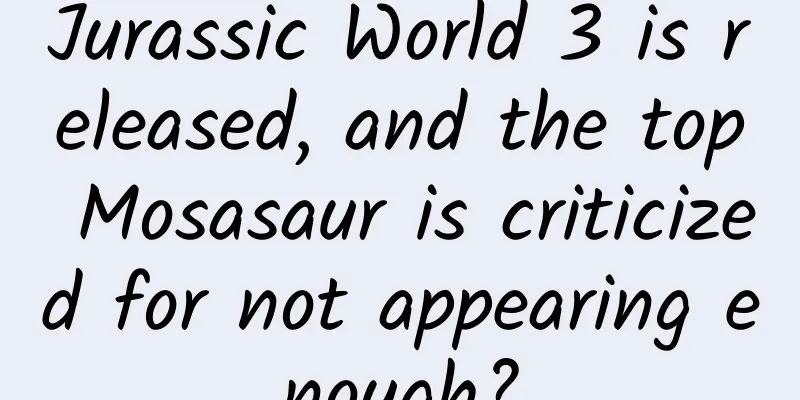The same family, different fates! These two sea elves not only look weird, but also look alike!

|
For the survival and continuation of the species, animals will try every possible means, and having babies is also an important strategy. Many animals that are smaller in size and at the bottom of the food chain often adopt the strategy of having many children, gaining the probability of survival by quantity, such as the joking saying we often hear, "high productivity is like that." However, those animals that are larger in size and have a more stable living environment often adopt the strategy of having a small number of elite children, giving birth to only a few at a time, and focusing on eugenics. The ammonites and nautilus in the Mesozoic oceans that I want to talk to you about today are examples of these two strategies leading to different fates. Ammonites and nautilus are from the same school, both belong to the cephalopod class, and have similar appearances, which often make it difficult to distinguish them. In the Mesozoic Era, ammonites were once prosperous, with a wide distribution, rapid evolution, and a wide variety of species. In contrast, after experiencing the glory of the first half of the Paleozoic Era, the nautilus gradually declined, and the nautilus was more primitive. Looking at these points alone, it seems that ammonites have a greater chance of winning, but 65 million years ago, they became extinct with the dinosaurs, while the nautilus has "survived" to this day and is still known as a "living fossil." The two results of this life and death have a lot to do with their strategies for having children. Let’s first look at ammonites. They choose shallow sea areas rich in plankton and produce a large number of small eggs with a diameter of about 0.5 mm. The ammonite babies after hatching are naturally very small. Those smaller plankton are the food of the ammonite babies. In such an environment, ammonites live a very comfortable life. Let's look at the nautilus. They choose to lay eggs in deeper waters, and only lay a few to dozens of eggs each time. However, each egg is very large, about 4 cm in size. The hatched nautilus babies are smaller than the adult ones, but their appearance is the same, and they are already able to prey on fish independently. If this environment could be maintained, the ammonite family would probably be able to continue to thrive. However, at the end of the Cretaceous period, the Earth's climate gradually cooled and the sea level dropped. As a result, the shallow seas rich in plankton gradually disappeared. The ammonite babies that feed on plankton found it difficult to survive and eventually withdrew from the Earth's stage. Although the Nautilus was not an outsider to climate change, it was lucky enough to survive because the deep sea was less affected. Nautilus fossil Jade ammonite fossil In fact, no matter which strategy is adopted, it is a trade-off and choice made in the process of species evolution. There is no difference between the two strategies, and both can effectively continue the race. The two completely different fates of ammonites and nautiluses certainly have an element of luck, but for us humans, they are of certain reference significance. Some pictures are from the Internet, please contact us if there is any infringement! |
<<: I always feel that men are greasy, but why are men's faces more oily?
Recommend
What does the user operation system of a tens-million-level product look like?
Before we start discussing topics related to &quo...
Blizzard is online! Why do we need artificial snow?
It’s snowing again! The previous snow has not yet...
Samsung Galaxy Fold review: An imperfect folding screen, a promising new form factor
Ten years ago, the interaction method of smartpho...
Changsha Tianpincha 2021 is the most reliable tea tasting place for high-end tea takeaway. I sincerely recommend it to everyone.
Changsha Tianpin Tea is the most reliable tea pla...
Don’t miss the “golden time” for these 5 things. Breakfast, exercise, and bathing will double your benefits…
Everyone wants to do the right thing at the right...
"Formulating Accurate Drainage Plan Column 6.0" Build a Passive Drainage System from 0 Foundation
Training course video lecture content introductio...
Green Onion Metal Standard Edition Review: A Transformation, Two-thirds Success
The mobile phone market has long been a bloody ba...
Why do some girls have more body hair than boys? Be careful of this disease!
Every summer, some girls will face a different pr...
How long can eroticism, horror and bad taste sustain online movies?
On July 13, the online movie "The Scarecrow&...
The "American consensus" on blockchain has been formed: embrace technology instead of blocking it
The United States is already taking drastic actio...
WeChat launches a new feature that can remotely lock the screen
Recently, WeChat has launched a new feature in th...
How much does it cost to develop a food delivery app in Jinchang?
How much is the quote for Jinchang takeaway devel...
Lao Huang Speaks English (Full Course) Baidu Cloud Download
Lao Huang Speaks English (Full Course) Resource I...
"Lifestyle diseases" have become the number one killer of health! The secret to prevention is just these 6 words
In 1974, Canadian scholars attributed death and d...
People with these 7 traits are mentally strong
References [1] racy S. Hutchinson, Ph.D. 7 Signs ...









